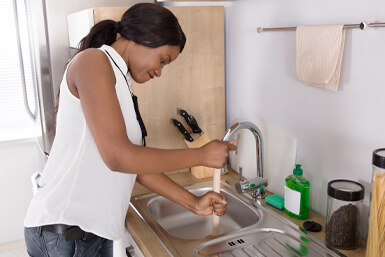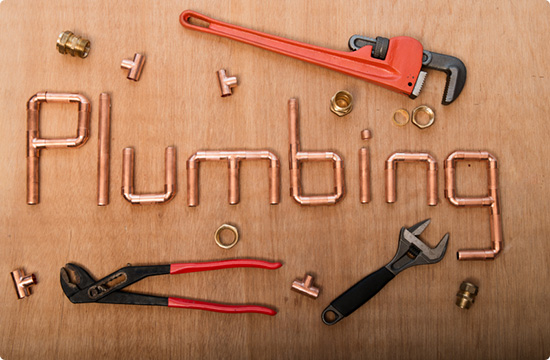Everyone has got their personal opinion about Why Your Water Pipes Are Noisy and How To Shut Them Up.

To detect loud plumbing, it is very important to figure out initial whether the unwanted noises happen on the system's inlet side-in various other words, when water is transformed on-or on the drain side. Noises on the inlet side have differed causes: too much water pressure, used shutoff and tap components, improperly connected pumps or various other home appliances, incorrectly put pipeline fasteners, and also plumbing runs including a lot of tight bends or other restrictions. Noises on the drainpipe side typically originate from poor area or, as with some inlet side sound, a layout consisting of limited bends.
Hissing
Hissing noise that occurs when a tap is opened somewhat generally signals too much water pressure. Consult your neighborhood water company if you suspect this trouble; it will certainly have the ability to tell you the water stress in your area and also can install a pressurereducing shutoff on the incoming water pipe if essential.
Thudding
Thudding noise, usually accompanied by trembling pipelines, when a faucet or device valve is shut off is a condition called water hammer. The sound and vibration are brought on by the reverberating wave of stress in the water, which unexpectedly has no location to go. Sometimes opening up a valve that releases water rapidly right into a section of piping containing a constraint, elbow, or tee installation can create the very same problem.
Water hammer can usually be healed by installing fittings called air chambers or shock absorbers in the plumbing to which the problem shutoffs or taps are linked. These devices permit the shock wave produced by the halted flow of water to dissipate airborne they have, which (unlike water) is compressible.
Older plumbing systems may have short upright sections of capped pipe behind wall surfaces on faucet runs for the very same function; these can ultimately loaded with water, minimizing or ruining their effectiveness. The cure is to drain pipes the water supply entirely by turning off the primary supply of water valve and also opening up all faucets. Then open up the major supply valve and shut the taps one by one, starting with the tap nearest the shutoff as well as finishing with the one farthest away.
Babbling or Screeching
Extreme chattering or shrilling that happens when a valve or tap is switched on, and that usually goes away when the fitting is opened fully, signals loosened or faulty internal components. The option is to replace the shutoff or faucet with a new one.
Pumps and also home appliances such as cleaning makers and dishwashers can transfer motor noise to pipelines if they are incorrectly linked. Link such things to plumbing with plastic or rubber hoses-never inflexible pipe-to isolate them.
Various Other Inlet Side Noises
Creaking, squeaking, damaging, breaking, as well as tapping generally are brought on by the growth or contraction of pipelines, normally copper ones providing hot water. The sounds take place as the pipelines slide against loosened bolts or strike nearby house framework. You can typically pinpoint the area of the issue if the pipes are revealed; just follow the audio when the pipes are making sounds. Probably you will uncover a loosened pipe hanger or a location where pipelines exist so close to floor joists or various other mounting pieces that they clatter against them. Affixing foam pipeline insulation around the pipes at the point of contact should treat the issue. Make sure straps and also wall mounts are protected and give appropriate support. Where possible, pipeline fasteners should be affixed to large structural components such as foundation wall surfaces as opposed to to framing; doing so decreases the transmission of resonances from plumbing to surfaces that can intensify and move them. If connecting fasteners to framework is unavoidable, cover pipes with insulation or various other durable material where they call fasteners, and sandwich completions of brand-new fasteners between rubber washing machines when mounting them.
Fixing plumbing runs that suffer from flow-restricting limited or many bends is a last hope that ought to be undertaken just after seeking advice from a competent plumbing contractor. Regrettably, this circumstance is rather typical in older houses that might not have been built with interior plumbing or that have seen numerous remodels, especially by beginners.
Drainpipe Noise
On the drainpipe side of plumbing, the chief objectives are to remove surface areas that can be struck by falling or hurrying water and to shield pipes to consist of unavoidable audios.
In new building and construction, tubs, shower stalls, commodes, as well as wallmounted sinks and also basins need to be set on or against resistant underlayments to decrease the transmission of audio through them. Water-saving commodes and taps are much less noisy than standard models; mount them instead of older types even if codes in your location still permit utilizing older fixtures.
Drainpipes that do not run up and down to the basement or that branch into horizontal pipeline runs supported at floor joists or various other framing present especially frustrating noise issues. Such pipelines are large enough to emit considerable vibration; they likewise lug significant quantities of water, that makes the circumstance even worse. In new building, define cast-iron dirt pipelines (the large pipes that drain commodes) if you can manage them. Their massiveness includes a lot of the sound made by water passing through them. Also, prevent transmitting drains in walls shared with bed rooms as well as areas where individuals gather. Walls including drainpipes ought to be soundproofed as was explained previously, making use of dual panels of sound-insulating fiberboard and wallboard. Pipes themselves can be wrapped with special fiberglass insulation produced the function; such pipelines have a resistant plastic skin (occasionally containing lead). Results are not always acceptable.
If Your Plumbing is Making These Sounds, There’s a Problem
A Bang or Thump When You Turn Off a Faucet
If a loud bang or thump greets you each time your turn off running water, you likely have a water hammer. A water hammer occurs when the water velocity is brought to a halt, sending a shock wave through the pipe. It can be pretty jarring — even worse, damaging to your plumbing system. All that thudding could loosen connections.
Strange Toilet Noises
You’re so familiar with the sounds your toilet makes that your ears will be attuned to anything out of the ordinary. Fortunately, most unusual toilet noises can be narrowed down to just one of several problems.
Foghorn sound:
- Open the toilet tank
- Flush the toilet
- When you hear the foghorn noise, lift the float to the top of the tank
If you’re ambitious, you can remove the ballcock valve and disassemble it to replace the washer. Or you can more easily replace the ballcock valve entirely. This device is relatively inexpensive and available at most any hardware store.
Persistent hissing:
The hissing following a flush is the sound of the tank filling. It should stop once the tank is full. But if the hissing continues, it’s likely because water is leaking out of the tank. The rubber flap at the bottom of the tank can degrade, letting water slip through and into the bowl. That’s why the tank is refilling continuously. Fortunately, this is an easy fix:
- Cut the water to the toilet by closing the shutoff valve on the water supply line.
- Flush the toilet to drain the tank.
- Disconnect the flapper
- Attach the new flapper
Gurgling or bubbling:
Gurgling or bubbling suggests negative air pressure in the drain line, likely resulting from a clog. As air releases, it causes the water in the toilet to bubble. This could either be a minor issue or a major one, depending on the clog’s severity. Clogs can be caused by toilet paper or more stubborn obstructions such as tree roots. If you can’t work out the clog with a plunger, contact a professional plumber for assistance because a clog of this magnitude could lead to filthy and unsanitary sewage backups in your sink bathtub.

I ran across that article on Why Do My Plumbing Pipes Make A Knocking Noise when doing a search on the search engines. If you enjoyed reading our blog entry plz be sure to pass it around. Thank-you for taking the time to read it.
Request An Estimate
Comments on “Why is My Home Making Strange Plumbing Sounds?”